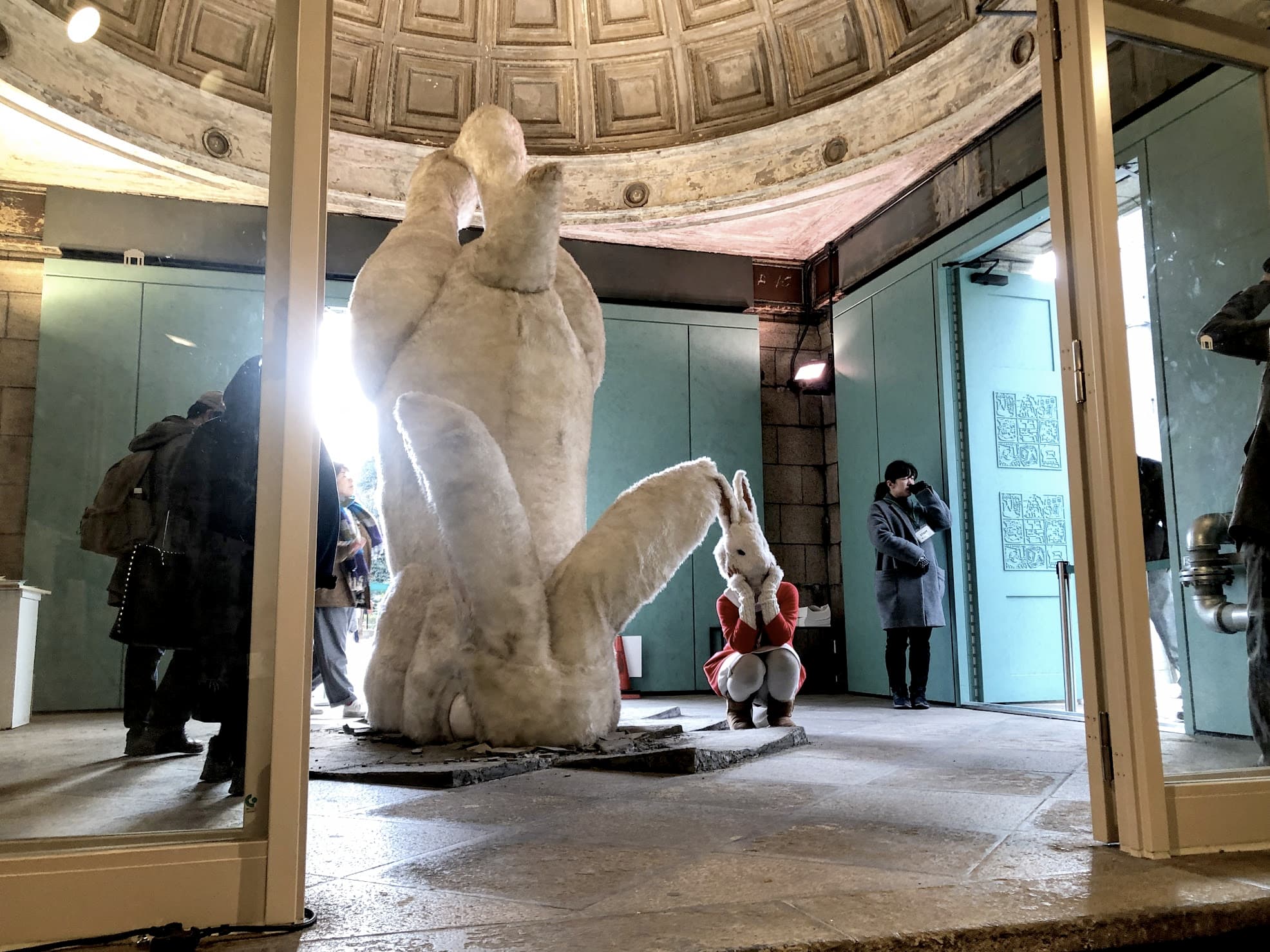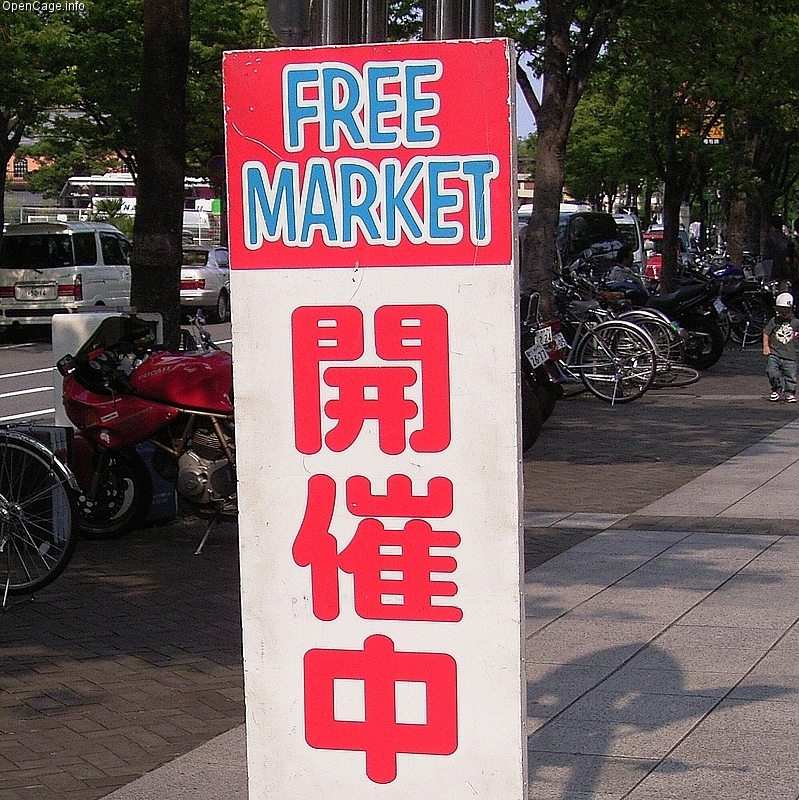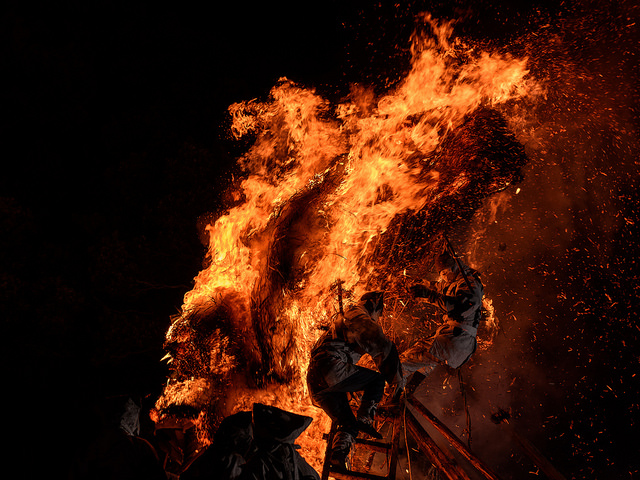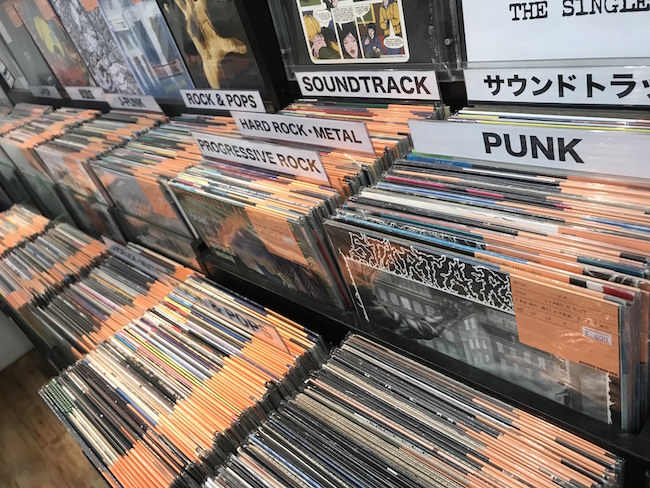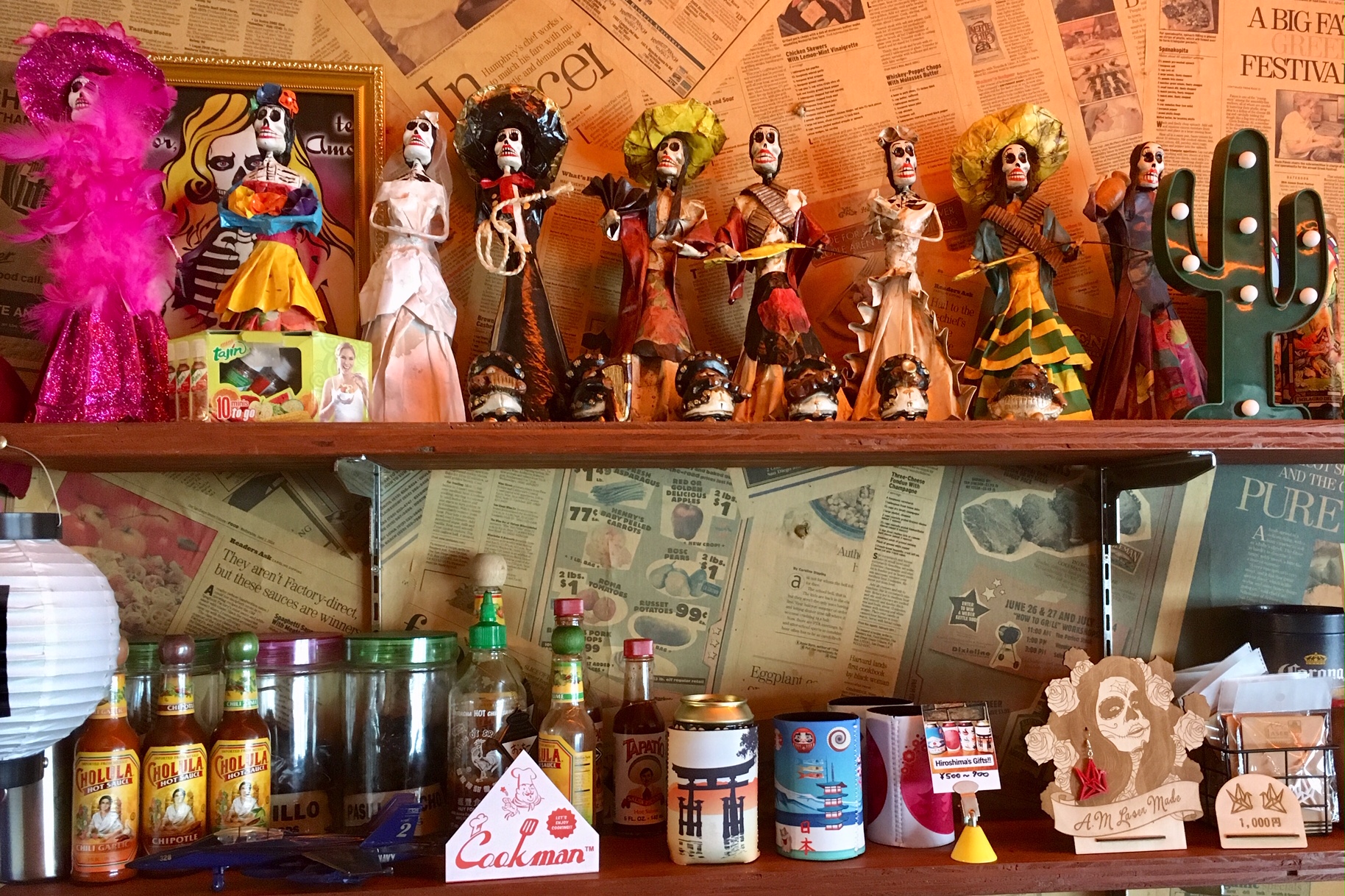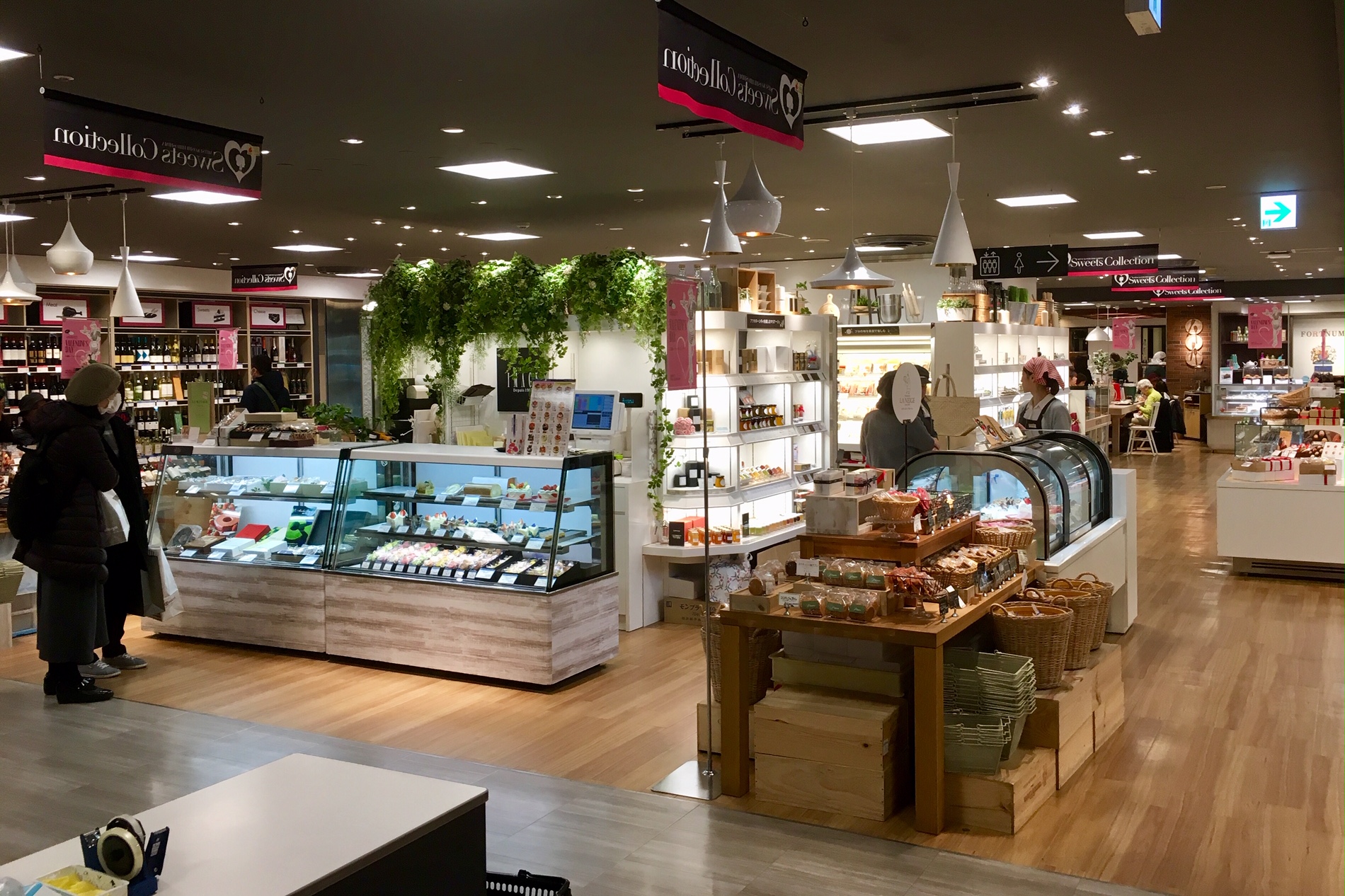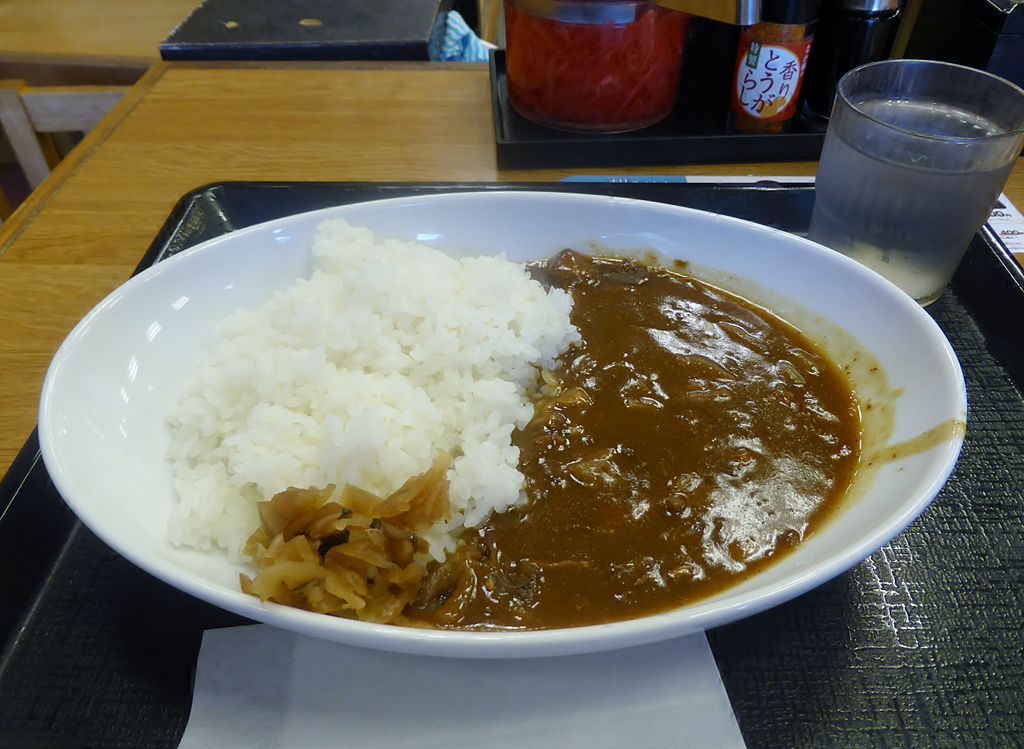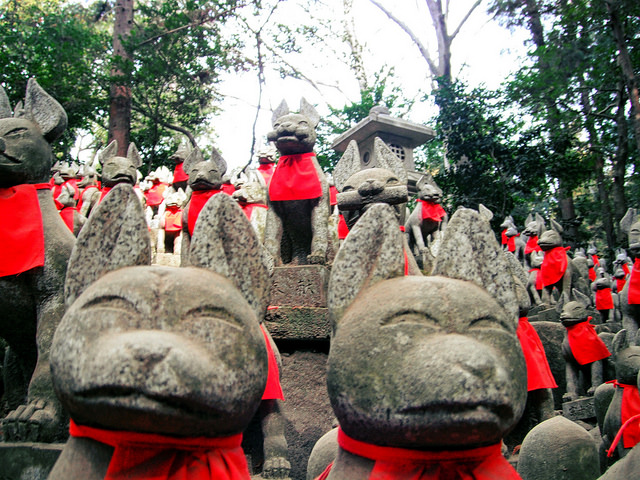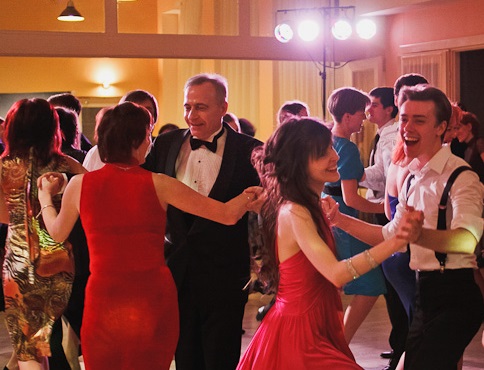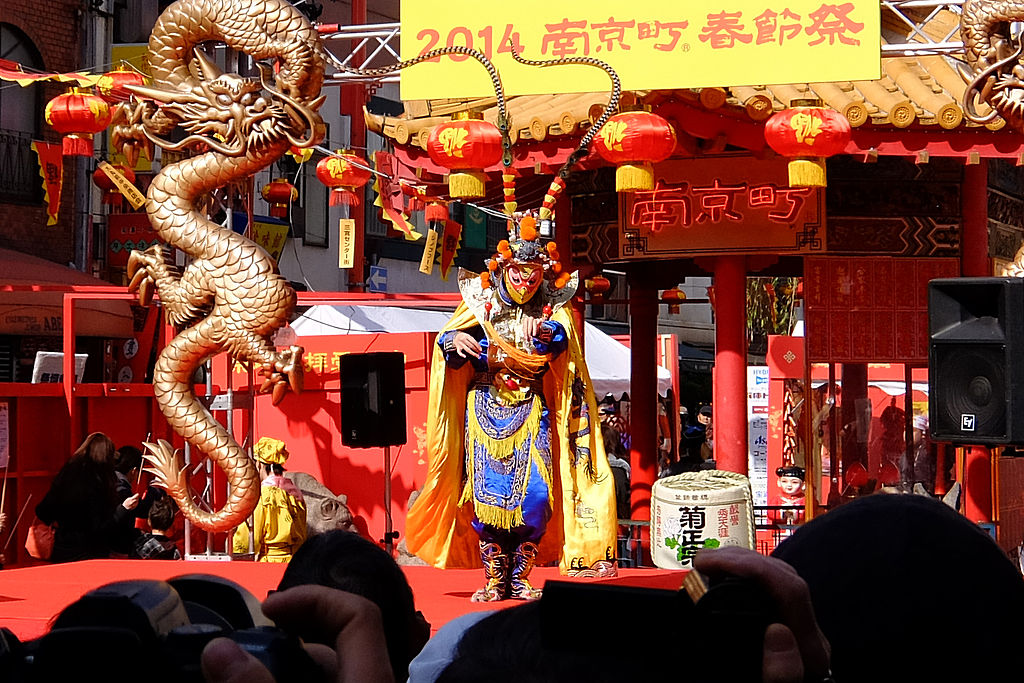Jan 29, 2019
Art of the Abandoned Station at Ueno Park
The Keisei Railway runs between Ueno Park and the far reaches of Chiba Prefecture including the city of Chiba and Narita Airport. Up until 1997, Keisei had a station right in the middle of the tunnel directly serving the Ueno Park Zoo and National Art Museum. The former Hakubutsukan-Dobutsuen station (what a mouthful!) stayed idle while trains sped between Nippori and Ueno. Because of it’s prewar era construction, it’s now gazetted as a Tokyo historical landmark, and cannot be torn down. Which is good, because that means it can be opened up from time to time in order to show it to the public.
 Every Friday, Saturday and Sunday until the end of February 2019, the Ueno Cultural Park Project has sponsored a group of artists to “take us down the rabbit hole” with a tour of the inside of the old station along with a multimedia art exhibition that’s a mix of Alice in Wonderland and A Series of Unfortunate Events. The tale unfolds as a rabbit from nearby Ueno Park is digging a hole with the homeless lady he calls “Grandma”. Suddenly it caves in and he ends up in a big place. Perhaps it’s the station itself?
Every Friday, Saturday and Sunday until the end of February 2019, the Ueno Cultural Park Project has sponsored a group of artists to “take us down the rabbit hole” with a tour of the inside of the old station along with a multimedia art exhibition that’s a mix of Alice in Wonderland and A Series of Unfortunate Events. The tale unfolds as a rabbit from nearby Ueno Park is digging a hole with the homeless lady he calls “Grandma”. Suddenly it caves in and he ends up in a big place. Perhaps it’s the station itself?
I won’t give away the rest of the tale, but it is centered around a newly written original work by theater director Shirotama Hitsujiya and artworks designed by Akiko Sakata. The story is based on her research collected in Ueno when studying the history of the station, and while interviewing workers at the National Museum of Nature and Science, the Ueno Zoo, and Keisei Railway. It alludes to the point that the station is undergoing a transformation and will be restored bit by bit, but for now, we can expect more pop-up exhibits like these in the future.
Old Hakubutsukan-Dobutsuen Station
13-23 Ueno Koen, Taito-Ku, Tokyo
Access: Ueno Station [JY][JK][JU][G][H][KS]
Dates & Times: Fridays, Saturdays & Sundays until Feb. 24, 2019. 11:00am – 4:00pm. Limited Admission; Last admission at 3:30pm. On busy days, tickets will be handed out for time slots starting at 10:00am, first come, first served.
Admission: FREE!
— By Jason L. Gatewood
*Images: Jason L. Gatewood*
Jan 28, 2019
Things are Hotting up at Toba no Himatsuri Fire Festival

Aichi sees a fair number of harvest festivals around the start of the Chinese New Year, with communities praying that their crops in the coming year will be bountiful and generous. However, very few of them are quite as, without wanting to seem disrespectful, terrifyingly crazy as The Toba no Himatsuri, also know as Toba Dai-kagaribi, or The Great Bonfire of Toba.
What is Toba no Himatsuri?
The Toba no Himatsuri, held in Toba in the Aichi city of Nishio, has a history spanning back some 1,200 years, and has in that time been used to predict the year’s harvest as well as the predominant weather for the coming year.
Preparations for the festival, traditionally held on the seventh day of the Chinese Year’s first month (though now on the second Sunday of every February), begin the day before, when locals build two giant torches of sun-dried kaya grass and sixty rods of fresh bamboo that stand some five meters high and weigh approximately two tonnes.
Around these torches, called ‘suzumi’, are wrapped twelve ropes to symbolize the months, and inside is placed ‘shingi’ holy trees, before the two suzumi are placed in the center of Toba Shinmeisha shrine.
What happens at Toba no Hi Matsuri?
On the day of its festival itself, two teams of local men are formed, with those coming from the east area of the Toba River being called ‘Kanchi’ and from the west, ‘Fukuchi’. Amongst each team is one 25 year-old man who is designated the shin-otoko (god man) and his ‘kamio’ ministers, and the festival is begun at the shrine, with the shin-otoko being blessed by the shinto priests.

Then, the two shin-otoko and their kamio, dressed in nothing but loincloths, head to the icy river to cleanse themselves in preparation for the main event: the lighting of the torches.
As night falls, the two immense suzumi are ignited, and protected only by the prayers that have been given to their clothing, the shin-otoko and kamio climb ladders and hurl themselves into the flaming torches, risking serious injury – or worse, with the intention of rescuing the shingi holy tree and as many of the ropes as they can.
Once the death-defying ritual is complete, a score is taken to see which team has collected the most sacred apparatus. If the Kanichi (福地: 福 means happiness or fortune) team wins then the mountainous harvest will be bountiful, but if the Kanko (乾地: 乾 means dry) team win, there will be droughts or natural disasters.
After the count the shingi are taken to the shrine as an offering. It is believed that if chopsticks are made of the shingi, then those who use them will not suffer from tooth-related disease, and if they are crafted into tools for sericulture, then the silk yield will be large.
Toba no Himatsuri Details
When: Second Sunday of February (February 17, 2019). Blessings begin at 15:00. Cleansing in the river is at 15:30. Torches are lit at 20:00.
Where: 89, Toba-cho Nishio (map)
Getting there: Toba Shinmeisha shrine is approximately 10 minutes walk from Mikawa Toba station on the Meitetsu Nishio-Gamagori line
Website: katch.ne.jp
Mark Guthrie
Image: by tohsuke minatoya via flickr.com (CC BY-SA 2.0) -Modified
Image: by 1192_tenugui via flickr.com (CC BY-SA 2.0) -Modified
Image: by hitoshi ozaki via flickr.com (CC BY-SA 2.0) -Modified
Jan 28, 2019
Nagoya’s Record Shops

While it feels like the music industry is becoming ever-increasingly digital, with the likes of Spotify, YouTube, Apple Music, and Soundcloud being the favored media for accessing artists, conversely, at the same time, the humble vinyl record is making a come back. According to Forbes, the format has grown 260 percent since 2009, and in 2017 the US saw vinyl sales increase for the 12th straight year, with the most units sold since Nielsen Music began tracking sales data in 1991. Vinyl, it seems, is no longer the preserve of music nerds and hipsters.
The rebirth is also being felt here, in Japan, evidenced by the fact that Sony is once again firing up its pressing factory after a 30-year break, as younger music lovers discover artists via streaming sites and then look to own the physical album.
If you too are a vinyl fan or are interested in finding some hidden gems in the Japanese market, there are absolutely tons of CD and record shops around Nagoya. Below is just a small sample of some of the better-known record stores that the city has to offer.
Banana Records
Many of Nagoya’s record shops are in the Osu area, and with its bright yellow front and distinctive facade, Banana Records is the one that stands out the most.

Split over two floors, it has a mix of new and secondhand records with a wide variety of genres to choose from, including a decent selection of indie/alternative, J-pop and classic rock, with punk and hardcore being particularly well represented. The second floor is a mecca for hip-hop and reggae fans, with a massive selection of options for each style.
There are also branches of Banana Records in Kanayama and Sakae.
Where: 3 Chome-22-32 Osu, Naka Ward (map)
Website: bananarecord.com
Sound Bay Republic
While Sound Bay Republic is mostly a CD store, there is still a great selection of used records of all genres to be found. It’s a little bit grotty, but there are bargains to be found, and at the very least it is an excellent place to while away an hour or so flicking through records.
Where: Kanayama, 1-7-4, Naka-ku Naka-ku (map)
Tel: 052-332-1662
Tower Records
Tower Records is an internationally-renowned record store, and there are two branches in Nagoya, one in the Passé shopping complex near the Nagoya Station and the other in Parco department store in Sakae.

The Passé store is a little on the disappointing side, with a small collection towards the back of the store (with a surprising number of David Bowie records) and a few more dotted around. The Parco store is bigger and better stocked with new releases and reprints.
Where: Sakae, 3 Chome-29-1 Nagoya PARCO East Building 6F (map)
Website: tower.jp/store/NagoyaParco
Greatest Hits Records
Greatest Hits is a two-story shop which stocks second-hand records and CDs exclusively, making it fantastic for a rummage.
There are a load of rock and pop records, particularly from the ’60s and ’70s, but where Greatest Hits excels is in soul, jazz and Motown, of which there are huge selections.

Keep an eye out for their sale days, when all records are 25 percent off, and the entirety of the top floor is overtaken with bargain boxes, and outside has numerous boxes with records for just 108 JPY.
Where: 2-27-26 Osu, Naka-ku (map)
Website: greatesthits-rec.com
Recordshop Zoo
Tucked away on an Osu backstreet, Recordshop Zoo, much like its name suggests, has a wide range of choices, with lots of great punk choices from both Japan and overseas.

But if you are a ‘dumpster diver’ and like to while away your time delving through boxes of old gems, this is the place for you. Outside the entrance, the floor is lined with boxes of records that go for 100 JPY each, half of which seem to be hip hop. It’s certainly the place to go if you want to take a chance on an unknown artist at bargain prices. Or on Rod Stewart, who seems to be particularly over-represented.
Where: Naka Ward, Osu 2-chome 30-19 Mizuno 2nd Building 2F (map)
Website: recordshopzoo.com
Mark Guthrie
Images: Mark Guthrie (Own work)
Jan 28, 2019
Mexican Food in Hiroshima

The rest of the world’s foodies may cast a longing eye toward Japan, but let’s face it, if you live here sometimes you just want a decent taco. Once upon a time, this was surprisingly difficult, but no longer. Hiroshima has at least two good Mexican options now, while an hour’s drive (a little longer by train) will take you to a third and praiseworthy option in Yamaguchi Prefecture’s Iwakuni. In no particular order, here they are.
Graffity Mexican Diner
After living in San Diego, the Nakashima brothers returned to Hiroshima with the skills and flavors they’d acquired while working at a Mexican restaurant a stone’s throw from Tijuana. Their Graffity Diner (and yes, some of the walls are covered with messages from happy customers) was one of the first Mexican places in town to make a successful start, and in their 11th year, they’re more popular than ever, with both locals and travelers. Expect to run into overseas players for the Hiroshima Carp here on a fairly regular basis. On my most recent trip, one brother manned three burners and a fryer, cutting up beer battered fillets of catfish and tending his carne asada, while the other brother worked the floor and register. They make their own sauces, and in addition to tacos, burritos, and chimichangas they offer steak, chicken mole and a popular Pescado a la Veracruzana. I ran out of guacamole in a hurry and was promptly provided more without asking. Their collection of beers and tequilas is a welcome feature, including Dos Equis lager and both a Porfidio and Olmeca. Group courses and all-you-can-drink specials are also available, though I wouldn’t count on that Olmeca being included.
Borracho’s
A more recent player, Borracho’s opened up about two years ago and immediately began winning rave reviews. Located well into the chaos of the Nagarekawa drinking district, it should be tricky to find, but luckily the enormous Virgin of Guadalupe above the entrance makes it fairly easy to spot. The menu isn’t especially surprising; it includes tacos, fajitas, taquitos, and chimichangas along with other bits and pieces. But the food is excellent, especially the small corn tortillas made fresh on the premises and featured in many of the dishes. The guys in the kitchen travel to Mexico often and have a lot of the flavors just right. I especially liked the little show they make out of creating your guacamole fresh at the table, and with the help of a few extra jalapenos, you’ll soon feel that friendly prickling of the scalp that means you’re enjoying yourself.
Borracho is also a great place to share dishes, and a large plate of chorizo tacos is an excellent place to start. The decor steps right up to the edge of being overdone and stops just in time. Mexican blankets, milagros, braided ristras of chiles, and other touches grace both the first and second floors. The top floor is nonsmoking, with a small bar of its own to see to parties and other groups. And the selection of tequilas? Outstanding. And since they’re open until 5 in the morning, you have plenty of time to try them all. God speed.
Mike’s Tex-Mex
As a transplanted Texan, this is the closest thing I’ve found to the kind of restaurants my family visited in the halcyon days of the 1970s. My kids love it, and despite it being an hour by car from our front door, we make the trip two or three times a year. Mike’s is old school Tex Mex, with enchiladas, refried beans and “Mexican rice” all running together on the platter.
I assume, that you’ll be ordering the Hungry Hombre special. The chips arrive at the table hot and greasy, and the guacamole is served in a bowl at least twice the size you’ll find elsewhere. Even drinks come in the kind of pebble-textured plastic tumbler I remember from childhood. Cocktails include both the regular margarita and the “Coronarita,” with a bottle of Corona upended in the margarita glass. Dessert? Try the cinnamon tortilla chips and vanilla ice cream. You’ll leave full and happy.
Mike’s has locations near U.S. military bases around Japan, so they’ve no doubt benefited over the years from customer feedback. And while the other two restaurants mentioned here are relatively small, Mike’s offers a spacious, non-smoking dining room with a rack of sombreros for the kids to wear and polaroids of happy diners covering one wall. The only thing missing is a mariachi band.
Graffity Mexican Diner
Address: 6-4 Fukuromachi, Naka-ku, Hiroshima-shi 730-0036
Access: South from Yoshinoya in the middle of the Hondori Shopping Arcade. Walk two and a half blocks toward Peace Boulevard and look for the sign on your right. The restaurant is on the fourth floor.
Hours: Seven days a week. Lunch 11:30-14:00, dinner 18:00-24:00
Telephone: 082-243-3669
Additional Info: English menu, and limited English spoken. Smoking. Credit cards accepted
Website: http://graffity.info/
Borracho’s
Address: No. 2 Mizuno Bldg, 6-5 Yagenbori, Naka-ku, Hiroshima 730-0027
Access: Easiest way to find it is probably to head south along Yagenbori from Kamiyacho. It’s about six blocks, but just keep an eye out for the huge Virgin mural over the door on your right.
Hours: Monday-Saturday, 18:00-05:00. Sunday, 18:00-02:00
Telephone: 082-241-3911
Additional Info: English menu, and limited English spoken. Smoking. Credit cards accepted
Website: http://borrachos-hiroshima.jp/ (apparently down at time of writing)
Mike’s Tex-Mex Restaurant
Address: 1-7-12 Mikasamachi, Iwakuni, Yamaguchi-ken 740-0016
Access: By car, take Route 2 to the Hatsukaichi Interchange entrance to the Hiroshima-Iwakuni Toll Road. Exit at Ootake and continue south on Route 2 into Iwakuni. At the junction with 110, follow 110 south. You’ll find Mike’s on your right shortly before the bridge over the Imazu River. Or, from Iwakuni Station, follow the tunnel below the station and walk south (right) along 110, past the Yamaguchi Prefectural Culture Hall. You’ll see Mike’s on the right.
Hours: Lunch 11:00-14:00, dinner 17:00-22:00. Closed Wednesdays and some national holidays.
Telephone: 082-724-7001
Additional Info: English menu, English spoken. Nonsmoking. Credit cards accepted
Website: http://mikes.jp/shopinfo04.html
Website 2: www.facebook.com/borrachosonline/
Photo by author
Jan 28, 2019
The Shopping Underground: Depachika in Hiroshima

One of the best reasons to visit a department store here is to ride the elevator down to the basement, where a food lover’s wonderland lies waiting. ‘Depachika’ combines the first two syllables of “department store” with the Japanese word for “basement.” Though they’ve evolved over the decades, depachika have been luring shoppers underground since the 1930s to browse gourmet goods, locate hard-to-find ingredients, or come away with the perfect gift.
Often connected to train stations, most of Hiroshima’s depachika are downtown. Like depachika elsewhere, though, they’re broadly organized into three sections, a deli, gift section, and market. In the deli, you’ll find salads, cold cuts and beautiful take-away bento boxes along with other offerings, all ready to eat. The gift section is a gallery of traditional Japanese teas, crackers, and sweets, arrayed alongside Western chocolates and pastries and row upon row of wine and sake bottles. The markets, meanwhile, may look at first glance like a standard small supermarket, but a closer look reveals a line of merchandise that you’re unlikely to come across at your local Fresta. Combining practicality and luxury, many visitors come more to browse than to shop, nibbling at samples as they wind their way between the glass display cases.
Fukuya
Fukuya is located between the other two department stores mentioned here, at the intersection of Aoi-dori and Chuo-dori right in the heart of downtown Hiroshima. Because it anchors the Hondori shopping arcade, Fukuya is often busy, and its depachika is a fairly lively place. Striking a balance between the gleeful sprawl of Sogo’s basement and the more curated elegance of Mitsukoshi, Fukuya’s depachika has a relaxed atmosphere, with a large proportion of elderly customers who look as if they’ve been shopping here for decades. The space occupies a large, L-shaped footprint, though as is often the case with depachikas you can quickly lose your way on a first visit. There are spots to sit with a cup of tea, and even a small branch of the local Michan okonomiyaki restaurant at one end. In between, you’ll find everything from Japanese sweets and tea to jewel-box arrangements of sushi, French fruit preserves and glass cases of pickled vegetables. The wine and spirits section is modest but has a whimsical selection of Hiroshima Carp-themed bottles, a perfect souvenir of Hiroshima.
Sogo
This is actually a double depachika, with two levels, so after you’ve browsed the stunning variety of sweets and teas available on the B1 level, perhaps pausing for a coffee or picking up something to bring home, be sure to check out the supermarket and fish counters at the north end. Then head down to B2, where the delicatessen section’s vendors offer yakitori, fresh dumplings, salads, fried pork cutlets, and croquettes and a hundred other things.
The first level opens directly onto Hiroshima’s Shareo underground shopping center, which is worth a stroll. The sweets section is often crowded even in the middle of a weekday, which can make it feel like a year-round food festival. They are, though, gradually trying to raise the image of the place. My eight-year-old’s heart was broken a year ago when we found that an old candy shop, with a rotating display of delights at child’s eye-level, had been replaced by something slightly more elegant but instantly forgettable. Still, this is the place to go if you want to load up on provisions for a day at the beach or the stadium or buy the perfect gift for a friend with a sweet tooth.
Mitsukoshi
This is the fur-draped old queen of Hiroshima’s depachika. Not as large as the two mentioned above, it makes up for volume with its endlessly fascinating selection. The supermarket section, in particular, is a wonderful place to browse if you love food. The fish in the seafood case look thrilled to be here, gleaming and glossy-eyed, while the abalone writhes fetchingly in its shell, unaware of the horrors in store. I knew a bodybuilder who for a year ate chicken breasts from the meat department three times a day because they were the best to be had. The fruit looks more engineered than grown, each piece huge and utterly flawless (with prices to match). Need more than one brand of Sacha inchi oil to choose from, or for your black cumin seed oil to be certified organic? You’re covered. Unhappy with a selection of butter that represents fewer than a dozen creameries, foreign and domestic? Have no fear. Unsure whether your freeze-dried currants should be whole, flaked or powdered? Get all three! The shochu and sake cases here are fantastic. Just running a finger along the labels is a luxury. Nearby are displays of old-school Japanese sweets, glistening bars of colorful jelly that friends and family back home won’t know whether to eat or wash with. And an octogenarian gentleman advising at the tea counter draws on a body of knowledge that should qualify him as a National Treasure. A great place, and well worth a stop, even if you have no intention of actually buying anything.
Fukuya
Address: 6-2-6 Ebisucho, Naka-ku, Hiroshima-shi 730-0021
Access: Corner of Aoi-Dori and Chuo-Dori, north from Parco in the Hondori shopping arcade.
Hours: Monday to Thursday, 10:00-19:30. Friday and Saturday, 10:00-20:00.
Telephone: 082-246-6111
Website: http://www.fukuya-dept.co.jp/honten/
Sogo
Address: 6-27 Motomachi, Naka-ku, Hiroshima 730-8501
Access: Downtown, two blocks north from where the streetcar line bisects Hondori.
Hours: 10:00-20:00 daily.
Telephone: 082-225-2111
Website: https://www.sogo-seibu.jp/hiroshima/
Mitsukoshi
Address: 5-1 Ebisucho, Nakaku, Hiroshima 730-8545
Access: One block east of Fukuya along Aoi-Dori.
Hours: 10:30-19:30 daily.
Telephone: 082-242-3111
Website: https://mitsukoshi.mistore.jp/store/hiroshima/index.html
Photo by author
Jan 25, 2019
Healthy Meals for Dieters in Kansai
The New Year is traditionally a time when people decide to put their culinary over-indulgences behind them and start a healthy diet. Thankfully for expats living in Japan, the country scores pretty well when it comes to health and nutrition in food and meals so anyone already eating plenty of Japanese meals probably won’t have to make too many changes.
Most Japanese restaurants will have plenty of low-calorie options and you can always ask how your food is prepared (e.g. if oils are used) if you’re in doubt. Another sure-fire way of keeping control over ingredients and portions is to cook meals at home. Here are a few meal suggestions to help you kick-start a healthy diet.
Japanese Curry with Brown Rice
Curry has been a part of the Japanese cuisine since the 19th century. Japanese curries are typically not as spicy as the Indian variety and there are regional variations with beef more commonly served with curries in the Kansai region instead of pork. The great thing about curries from a dieter’s point of view is that they are a tasty and convenient healthy food option. If preparing the curry yourself, use brown rice instead of white as it contains more nutrients and protein. The healthiest option is to make a vegetable curry, but you can add meat or fish too if you want as long as you don’t fry or cook in oil. Also avoid katsu curry breading and frying the meat, meaning it will be higher in fat and calories.
Ozoni
Another good healthy option that’s also tasty is a nice miso or broth-based soup. Ozoni is a miso-based soup that’s popular as a breakfast course on New Year’s Day in Japan. The advantage of miso is that it’s a low-calorie, low-glycemic option. A typical soup will provide around 20 calories. Ozoni usually includes mochi (rice cake) and the Kansai recipe is typically made with white miso, satoimo (taro root), daikon, carrot, and katsuobushi (bonito flakes) to garnish. The mochi is boiled before being added to the soup.
Funazushi
Sushi is one of the most popular Japanese foods and can be a good choice for dieters due to ingredients involved and preparation methods. Not all sushi is healthy, however, and if you’re on a diet you should avoid “tempura” sushi as this will mean it’s been deep-fried. Funazushi is a Kansai favourite and is one of the oldest types of sushi in Japan. It’s made with fermented funa fish, which gives it a distinctly strong smell and taste. The fish is pickled with rice but also with salt, so avoid eating too much and raising your sodium levels. Around 3-4 pieces should be enough.
Ramen with Shirataki Noodles
Shirataki noodles are thin, translucent noodles made from konjac (elephant yam). They can be served in Japanese restaurants or bought in packets in Japanese supermarkets. Shirataki, also called konnyaku, are ideal for dieters as they are composed water and dietary fibers that makes them very low in both calories and carbohydrates. You can enjoy these noodles in a low-carb ramen made with thinly sliced pork, lettuce, enoki mushrooms, dried wakame seaweed and menma bamboo shoots. Add a boiled egg if you want to push the boat out.
Yudofu
Yudofu is boiled tofu. This is a favoured winter dish for Kansai locals and is also popular with vegetarians and those on a healthy diet. Tofu has many properties that make it a good source of nutrients if you’re on a diet. It’s packed full of protein, iron and calcium and research has also found that soy-based foods such as tofu can reduce your appetite. Yudofu is easy to prepare. Simply simmer it in a dashi broth and then serve, with added condiments if desired.
Tokumeigakarinoaoshima [CC0], from Wikimedia Commons
Jan 25, 2019
Toyokawa Inari – One of Japan’s Big Three Inari Shrines

About 75 minutes from Nagoya, in the Mikawa Bay region, you can find Toyokawa Inari, one of the most unique and unusual places of worship in the area.
Along with Kyoto’s Fushimi Inari and the Yutoku Inari Temple in Saga Prefecture, Toyokawa Inari is considered one of Japan’s ‘Big Three’ Inari Temples, but even such an impressive claim to fame is to belittle the importance – not to mention interest – of this extraordinary historical landmark.
The Duality of Toyokawa Inari
Established by the monk Tokai Geki in 1441, Toyokawa Inari is uncommon in that it is not only a Sodo sect Buddhist temple, but also a Shinto place of worship. While the duality of shrines and temples was once commonplace throughout Japan, during the Meiji era reformists decreed that places of worship were to be devoted to one or the other. Toyokawa Inari, however, escaped this fate, and today it retains many aspects of Buddhism as well as enshrining Inari Okami, the Shinto god of fertility, agriculture and success.

Toyokawa Inari covers a sprawling 1,272 hectares, the entrance to which features a huge 4.5-meter-high door crafted from a single slab of wood, and you are welcomed by both a Shinto torii gate and a pair of fierce Buddhist Nio temple guardians.
Although most of the temple was rebuilt in the Meiji period or later, the Sanmon dates from 1536 and is the oldest existent building in the complex.

Elsewhere within the grounds you can find the temple’s Treasure House, which includes a statue of the god Jizo Bodhisattva, and was crafted in the Kamakura era and later designated as Important National Cultural Asset. As well as the statue there are a number of interesting artifacts, including scrolls, folding screens and an ornate wooden palanquin for use by a noble woman.
But perhaps of the greatest interest is the foxes.
The foxes of Toyokawa Inari
Once you have offered your prayers to your faith of choice, or simply marveled at the impressive structures, follow the path down the steps to the right of the main shrine. Here you will find Myogen Temple, which houses the effigy of the Thousand-Handed Senju Kannon, a sight that most of the shrine’s six million annual visitors miss.
From there, pass through the sacred copse and behind the Okuno-in pavilion, along the winding paths lined with flags flown as offerings. Here you will find the Reiko-Zuka, a hillside covered in red-bibbed stone foxes.

As well as being the god of prosperity and agriculture, the aforementioned Okami Inari is also the god of foxes, as the pure-white animal is considered to be Inari’s messenger. At Toyokawa Inari you will find literally thousands of fox statues of varying sizes throughout the grounds.
Inari was also seen as the protector of warriors and merchants, which has over the years brought a number of visitors of great note, with the likes of Oda Nobunaga, Imagawa Yoshimoto, Toyotomi Hideyoshi and Tokugawa Ieyasu amongst many the many others who made the pilgrimage to the Toyokawa Inari to pray for victory in battle.

But it is not only samurai who visit Toyokawa Inari. Today, many people come in order to pray for good fortune, prosperity and success. Or they just come to look at the foxes. One reason is as good as another to discover this unique structure of mysterious beauty in the south of Aichi.
Toyokawa Inari Details
Where: Aichi-ken, Toyokawa-shi, Toyokawachō (map)
Getting there: Take the Toyohashi bound train from Meitetsu Nagoya Station . At Ko Station, change to Odabuchi Station. The shrine is a three-minute walk from there.
Mark Guthrie
Image: by Roy Navarro via flickr.com (CC BY-SA 2.0) -Modified
Image: via wikimedia commons CC BY-SA 4.0 – Modified
Image: by GothPhil via flickr.com (CC BY-SA 2.0) -Modified
Image: by Kasadera via flickr.com (CC BY-SA 2.0) -Modified
Image: by Bong Grit via flickr.com (CC BY-SA 2.0) -Modified
Jan 22, 2019
Dance Classes in Kobe

Whether you fancy a bit of a tango, some contemporary street dance or just want to keep in shape with a bit of structured movement, you can find an assortment of dance classes in and around Kobe to suit all ability levels. Here is a guide to some of what is currently on offer and where to find it.
Ballroom dancing
Ballroom dancing has experienced a growth in popularity in the past few years and there are a number of places in Kobe running classes where you can try different styles no matter what your skill level. The American franchise Arthur Murray Dance Studios has locations in Kobe and Osaka, offering a range of dance styles including waltz, tango, cha-cha-cha and salsa at levels from introductory all the way to gold advanced. Studio Joy in Sannoyima offers more of a local experience with Japanese instructors teaching both beginners and experienced classes. Individual classes are 3,600 yen for 25 minutes, while group sessions are cheaper. The Hayosaki School of Dance in Motomachi holds “bright, fun and easy to understand” classes for both adults and kids. Prices range from 1,000 – 5,000 yen, plus there is a membership fee of 1,630 yen. Society Elegante in Sannoyima is another local-run studio offering everything from rumba to waltz with a free lesson offered to beginners. Finally, Swing, which is located close to Tarumi station, offers both ballroom and swing dance sessions at all levels from 5,150 yen per person with a free trial session offered.
Street dance
For those wanting something a bit more modern and “urban”, there are a few studios specializing in street dance that can be enjoyed by adults and kids alike. Lab 3 in Kobe’s Motomachi shopping district has been offering street dance lessons since 2002. There is a wide range of styles to choose from including hip-hop, freestyle, jazz, krump, reggae, breaking and capoeira. Private lessons and kids sessions are available with costs starting at 1,050 yen per class plus a one-off joining fee of 3,100 yen. GD Kingz, located 5 minutes from Sannoyima station, runs sessions every weekday evening plus Saturdays where you can learn styles including hip-hop, jazz and break. Way Studio has two locations in Kobe – Studio A and Studio B – where a team of specialists teach hip-hop, break, New Jack Swing and more. Yoga sessions are also on offer.
Ballet dancing
Ballet is a slightly more technical form of dancing with not the same breadth of appeal as the likes of ballroom and street dance, but there are a couple of opportunities in Kobe for budding ballet dancers or those who want to give it a go. The Sadamatsu and Hamada Ballet Company is a professional ballet organisation formed in 1965 that has performed worldwide. The company has 25 classrooms across Kansai. Its Kobe venue is close to Oji Park station. Classes are available for infants, high school students and adults. Morning and evening sessions are offered. Way Studio also offers ballet and classical dance tutoring alongside its street dance program. Classes are offered for children already accustomed to ballet who are interested in pursuing it further, plus there is a foundation ballet program for adults who want to give it a try.
Other dance opportunities in Kobe
If you’re up for something a bit more experimental – either watching, participating or perhaps both – Dance Box is a contemporary dance project that gives performances and workshops in both modern dance styles and theater from its art studio space 10 minutes by walk from Shin-Nagata station. If you don’t want to take things too seriously and are just looking to have some fun, meet new people and stay active, Biodanza Kobe is a dance meet up that uses dance, music and movement to improve health and increase enjoyment of life. Finally, fans of northern soul should look out for regular club nights at the Jam Jam Club where DJs spin classic tunes from the 60s and 70s.
Tokova [CC BY-SA 3.0], from Wikimedia Commons
Jan 21, 2019
Celebrating New Years in Kobe’s Chinatown 2019

Despite its proximity to China, there are only a few Chinatowns in the whole of Japan. One of the largest and most popular is the one in Kobe, called Nankin-machi. This Chinatown is located between three gates: Chang’an Gate to East, Xi’an Gate to West, and Nanluo Gate to South. As soon as you pass through any one of these gates, you’ll feel transported to another country.
There are always visitors during weekends and on holidays, but the best time of all to visit Nankin-machi is during Chinese New Year.
What Is Chinese New Year?
Chinese New Year celebrates the lunar new year. The date once also marked the new year for Japan, but the country changed to the Gregorian calendar in 1873. However, residents of Nankin-machi have celebrated the festival since 1987. Every year, Chinese New Year falls on a different date, somewhere between the end of January and early to mid February. In 2019, it will be February 5.
Celebrations for New Year in Kobe
The days leading up to New Year create a vibrant atmosphere in Nankin-machi. The pavilion acts as the main stage, where dragon dances, face-changing acrobatics, martial arts, music, and tai chi performances are on display. Acts begin around 11 a.m. and continue until 9 p.m. You can also see many performances on the days after the New Year. On the final day, a lion dance closes the festival.
On the day itself, there is a prayer for safety at 10:30 a.m. The festival then begins with an opening ceremony at 11 a.m. and celebrations continue for the rest of the day. The most important event on the day of New Year is a parade. Participants dress up as historical figures and ride along the streets on elaborate floats. You’ll see famous faces like Yang Guifei (one of the Four Beauties of ancient China) and warlord Liu Bei. The parade takes place twice — once in the morning and once in the late afternoon.
What Else to See in Nankin-machi
While you’re in Nankin-machi, you’ll want at least an hour or two to explore the area.
With more than 100 restaurants, you’ll have the chance to try many different flavors of Chinese cuisine. As residents of Nankin-machi originate from various regions of China, you can try dishes from Shangai, Beijing, Sichuan, and more. However, you may prefer to grab a snack, like dim sum or sweets, as you walk. There are also around the same number of shops as restaurants, where you’ll find Chinese merchandise, accessories, and clothing.
In addition to food and shops, there are some specific places you’ll want to visit. These include:
- The Chinese temple dedicated to Guan Yu
- The public square, where you’ll find a gazebo and two Kozai-shin Ningyo statues
- Chang’an Gate, the most impressive of the three gates
If you’re seeking the best place to spend Chinese New Year in Japan, Nankin-machi in Kobe should definitely be your top choice. If you’re unable to arrive on the actual date, bear in mind that there’s still plenty to enjoy a few days before and after New Year.
663highland [GFDL, CC-BY-SA-3.0 or CC BY 2.5], via Wikimedia Commons
